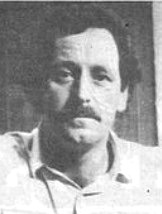
Sir Richard John Hadlee is a New Zealand former cricketer. Hadlee is widely regarded as one of the greatest all-rounders in cricket history,and amongst the very finest fast bowlers.

Courtney Andrew Walsh OJ is a Jamaican former cricketer who represented the West Indies from 1984 to 2001,captaining the West Indies in 22 Test matches. He is a fast bowler and considered one of the all-time greats,best known for a remarkable opening bowling partnership along with fellow West Indian Curtly Ambrose for several years. Walsh played 132 Tests and 205 ODIs for the West Indies and took 519 and 227 wickets respectively. He shared 421 Test wickets with Ambrose in 49 matches. He held the record of most Test wickets from 2000,after he broke the record of Kapil Dev. This record was later broken in 2004 by Shane Warne. He was the first bowler to reach 500 wickets in Test cricket. His autobiography is entitled "Heart of the Lion". Walsh was named one of the Wisden Cricketers of the Year in 1987. In October 2010,he was inducted into the ICC Cricket Hall of Fame. He was appointed as the Specialist Bowling Coach of Bangladesh Cricket Team in August 2016.
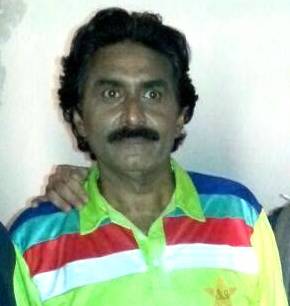
Mohammad Javed Miandad PP SI,popularly known as Javed Miandad,is a Pakistani cricket coach,commentator and former cricketer known for his unconventional style of captaincy and batting. ESPNcricinfo described him as "the greatest batsman Pakistan has ever produced" and his contemporary Ian Chappell extolled him as one of the finest batsmen in the history of cricket.

The New Zealand national cricket team represents New Zealand in men's international cricket. Nicknamed the Black Caps,they played their first Test in 1930 against England in Christchurch,becoming the fifth country to play Test cricket. From 1930 New Zealand had to wait until 1956,more than 26 years,for its first Test victory,against the West Indies at Eden Park in Auckland. They played their first ODI in the 1972–73 season against Pakistan in Christchurch. New Zealand are the inaugural champions of WTC which they won in 2021 and they have also won ICC CT in 2000. They have played in the CWC final twice and the T20 WC final once.

Martin David Crowe was a New Zealand cricketer,Test and ODI captain as well as a commentator. He played for the New Zealand national cricket team between 1982 and 1995,and is regarded as one of the country's greatest batsmen.

Daniel Luca Vettori is a New Zealand cricket coach and former cricketer who played for the New Zealand national cricket team. He was the 200th player to win their Test cricket cap for New Zealand and an inductee in the New Zealand Cricket Hall of Fame. He is currently an assistant coach of the Australia men's national cricket team.

David Clarence Boon is an Australian cricket match referee,former cricket commentator and international cricketer whose international playing career spanned the years 1984–1996. A right-handed batsman and a very occasional off-spin bowler,he played first-class cricket for both his home state Tasmania and English county side Durham. Boon was a part of the Australian team that won their first world title during the 1987 Cricket World Cup.
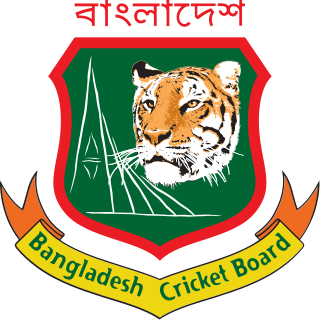
The Bangladesh men's national cricket team,commonly known as The Tigers,is the national cricket team of Bangladesh,administered by the Bangladesh Cricket Board (BCB). They are a Full Member of the International Cricket Council (ICC) with Test,One-Day International (ODI) and Twenty20 International (T20I) status.
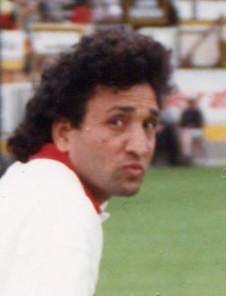
Abdul Qadir Khan SI was an international cricketer who bowled leg spin for Pakistan. Abdul Qadir is widely regarded as a legendary leg spinner from the 1970s and 1980s and was a role model for up and coming leg spinners. Qadir was voted the best player in the Group B matches of the 1987 Cricket World Cup and won a car which he donated to Imran Khan for his Shaukat Khanum Memorial Cancer Hospital and Research Centre project. Later he was a commentator and Chief Selector of the Pakistan Cricket Board,from which he resigned in 2009 due to differences of opinion with leading Pakistan cricket administrators.

Bert Sutcliffe was a New Zealand Test cricketer. Sutcliffe was a successful left-hand batsman. His batting achievements on tour in England in 1949,which included four fifties and a century in the Tests,earned him the accolade of being one of Wisden's Five Cricketers of the Year. He captained New Zealand in four Tests in the early 1950s,losing three of them and drawing the other. None of Sutcliffe's 42 Tests resulted in a New Zealand victory. In 1949 Sutcliffe was named the inaugural New Zealand Sportsman of the Year,and in 2000 was named as New Zealand champion sportsperson of the decade for the 1940s.
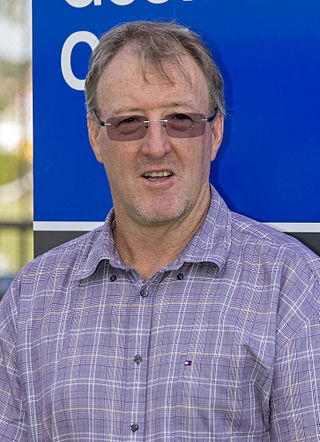
Geoffrey Francis Lawson,is an Australian cricket coach and former cricketer and the former coach of the Pakistan cricket team.
Joseph Ravindran Ratnayeke,is a Sri Lankan businessman and former cricketer who was ODI captain of Sri Lanka national cricket team. Ratnayeke played 22 Tests and 78 ODIs from 1982 to 1990,his Test best bowling performance of eight wickets for 83 runs at Jinnah Stadium (Sialkot) Pakistan was a Sri Lankan Test record at the time,and was also vice captain to Arjuna Ranatunga.
Sidath Wettimuny is a Sri Lankan former cricketer,who played Test cricket and One Day Internationals as an opening batsman from 1982 to 1987. Wettimuny was a typical 1980s opening batsman in that he often played very defensively,grafting for his runs,and his ODI strike rate of 48 shows this quite clearly. In 1985,he was named as one of Wisden's Five Cricketers of the Year.

Daryl Raymond Tuffey is a former New Zealand cricketer who represented New Zealand in all formats internationally. Tuffey was born in Milton,Otago,and played domestic first-class cricket for Northern Districts Knights. Tuffey retired from all forms of cricket on 14 September 2012.
Martyn Douglas Moxon is a former English cricketer,who played in ten Test matches and eight One Day Internationals for England and for Yorkshire County Cricket Club between 1980 and 1997. In May 2007,Moxon was confirmed as Director of Professional Cricket at Yorkshire,a role which he left in December 2021.
Dayle Robert Hadlee is a New Zealand former cricketer who played in 26 Tests and 11 ODIs from 1969 to 1978. He is the son of Walter Hadlee,the older brother of Sir Richard Hadlee and the younger brother of Barry Hadlee.

Timothy Grant Southee,is a former New Zealand international cricket who has captained New Zealand cricket team in all formats of the game. He is a right-arm medium-fast bowler and a hard-hitting lower order batsman. The third New Zealand bowler to take 300 Test wickets,he was one of the country's youngest cricketers,debuting at the age of 19 in February 2008. On his Test debut against England he took 5 wickets and made 77 off 40 balls in the second innings. He plays for Northern Districts in the Plunket Shield,Ford Trophy and Super Smash as well as Northland in the Hawke Cup. He was named as New Zealand's captain for the first T20I against West Indies in place of Kane Williamson,who was rested for that game. The Blackcaps won that match by 47 runs. Southee was a member of the New Zealand team that won the 2019–2021 ICC World Test Championship. Southee's Test batting strike rate of 82.68 is the third highest among batsmen with a minimum of 2000 careeer runs. He was also a part of the New Zealand squads to finish as runners-up in two Cricket World Cup finals in 2015 and 2019.
The New Zealand cricket team toured England during the 1986 season to play a two-match One Day International series and a three-match Test series against England. New Zealand won the Test series,defeating England 1–0 with two matches drawn,the first time a New Zealand side had won a Test series in England.

Trent Alexander Boult is a New Zealand cricketer who represented the New Zealand cricket team in all formats between 2011 and 2024. He continues to play in various Twenty20 leagues around the globe as a fast bowler. Boult was a key member of the New Zealand team that won the 2019–2021 ICC World Test Championship. He was also a part of the New Zealand squads to finish as runners-up in two Cricket World Cup finals in 2015 and 2019.
